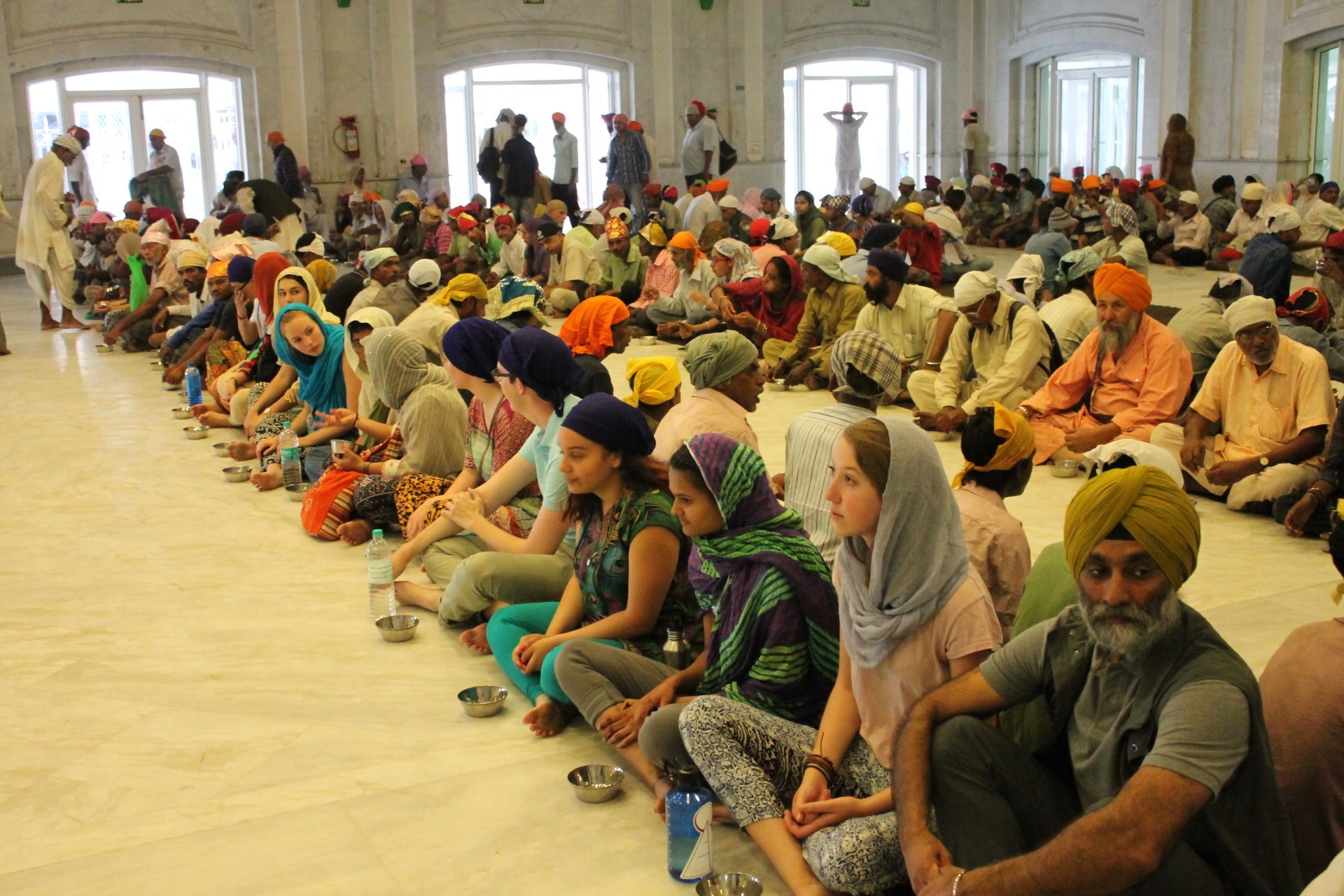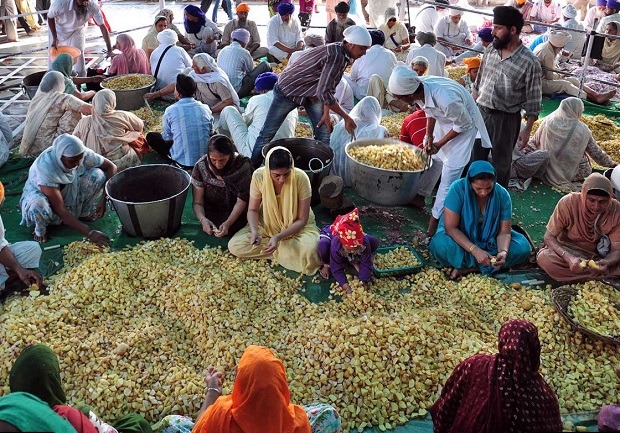Langar at Golden Temple
Langar at Golden Temple is a very holy experience. With thousands of visitors daily the shrine is the most popular Sikh destination. Sri Harmandir Sahib or the Golden Temple serves around 100,000 free meals every single day.
The number doubles at Baisakhi, a festival of harvest which is central to Sikhism. Guided by the basic principle of Sikhism “Seva” the kitchen of Golden Temple is solely run by volunteers.
Sri Harmandir Sahib Gurudwara is the most historic and sacred site in Sikhism. Built at a level lower than surrounding land this place represents humility.
Its doors open from the north, the south, the east and the west signifying the people belonging to every walk of life are welcome to the shrine. Harmandir Sahib is central to Sikhism and it is pivotal to Sikhs religion.
The history of this Gurudwara dates back to 16th Century when Guru Ram Das, the 4th spiritual leader of Sikhism started the process of digging Amrit Sarovar or the holy tank that would surround Harmandir Sahib.
The first brick of the central abode was laid by Hazrat Mian Mir, a popular sufi saint of that time. The construction work was directly supervised by the 5th Guru Arjan Dev. The city gets its name from Sarovar.

Near the north gate of Harmandir Sahib lies a red brick modest structure. This unassuming building is the Guru Ram Das Langar, the world’s largest free community kitchen.
It feeds around 3.5 million people in a year, close to the entire population of Canada. This tradition of langar was initiated by revered Guru Nanak Dev ji. His father gave him 20 rupees for a profitable business; he instead used that money to feed the impoverished considering it to be a true bargain.
Built over 50,000 square feet the Guru Ram Das langar hall is divided into various sections. It has 2 halls that can seat over 5,000 people at a time.
On the right side of the structure is a smaller building that houses 3 mechanized roti makers that aid the kitchens. Parallel to kitchen and hall there is two massive roti making sections.
Here roti is rolled by hand by thousands of volunteers. Behind langar hall is a separate kitchen which has three cauldrons exclusively for making lentils in mega quantity over a tradition of the wood-fire oven.
Another open kitchen has two ginormous vats where food is cooked on important days.

Guru Ram Das Langar has different menus every day. The first offering to the devotees is tea which is served in the morning. A huge quantity of tea is prepared and served by selfless volunteers.
Every devotee who comes out of the inner sanctum is blessed with Karah Prasad, a religious offering served in every Gurudwara. The food here is simple and lentils provide the protein component to the platter.
It uses upto 1800 to 2000 kg lentils daily. The exclusive dal kitchen has 3 cauldrons each with the capacity to cook 400 kg of dal. The whole process of cooking dal takes upto 3 hours.
The rotis are first rolled out by volunteers in two large sections then they are cooked on large griddles. And finally, the cooked rotis are slathered in using ghee.
The roti making machines aid to volunteers by producing 11,000 rotis per hour. The roti is sacred. It is accepted by palm closed in gratitude.

Another army of volunteers awaits vegetables which come to them after cleaning. Daily 5,000 kg of vegetables is chopped here.
The chopped vegetables are then taken to the kitchen for the cook. Ghee is central to cooking which enhances the nutritional value of food.

Kheer is an essential part of every langar adding to the sweet component of the meal. Milk is sourced from a donation from nearby villages and after 1 hour of stirring kheer is ready for serving. On special occasions, extra kitchens are set up and new food items are prepared for eg Jalebis.
The dough is prepared lovingly by hands. The dough is then popped into the oil to turn into these golden delights. Around 1500 kg Jalebis are prepared on Baisakhi.
Each devotee is greeted by a saying “Himself he cooks, himself he places it on a platter and himself he eats too”. Egalitarianism is central to Sikhism. Devotees streaming in are handed clean plates, bowls and spoons as the walk towards the mega langar hall.
Each devotee who comes in sits in a panghat and served langar by volunteers. Rich or poor all sit alike and served alike. The flow of devotees in the langar hall is carefully managed.
One lot takes around 20-25 minutes to finish the langar. As they finish, cleaning teams take over and takes around 5 minutes to clean the hall completely. And then next lot of devotees is let in.

After eating plates in rotation are washed multiple times before being sent back. Hygiene is quintessential here. Each utensil goes through five stages of cleaning. Each utensil that comes out is clean.
Gurudwara is a sacred place. Every devotee coming here seeks the blessings of God and even as they say
“All that is mine is yours, Lord”.



